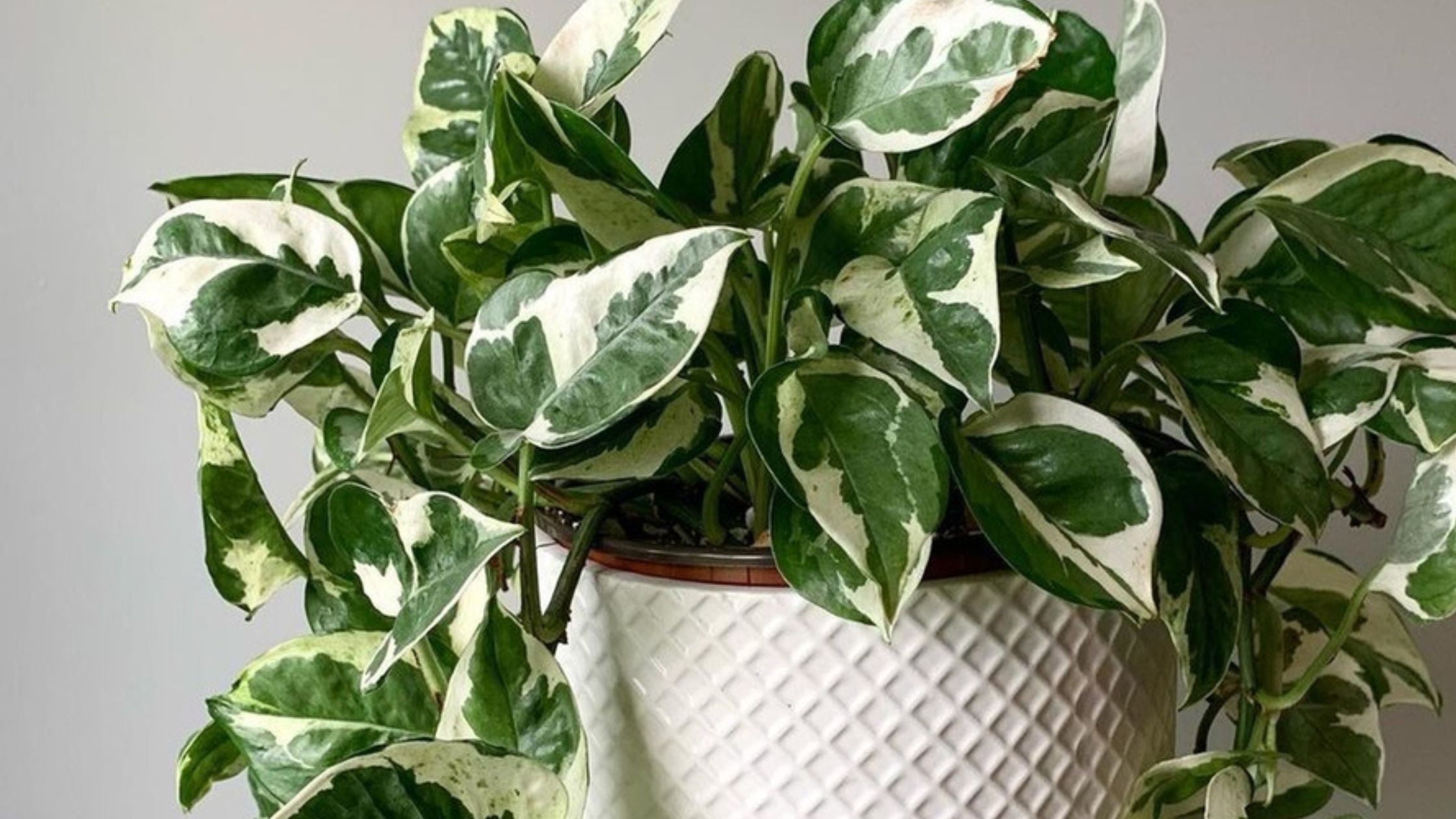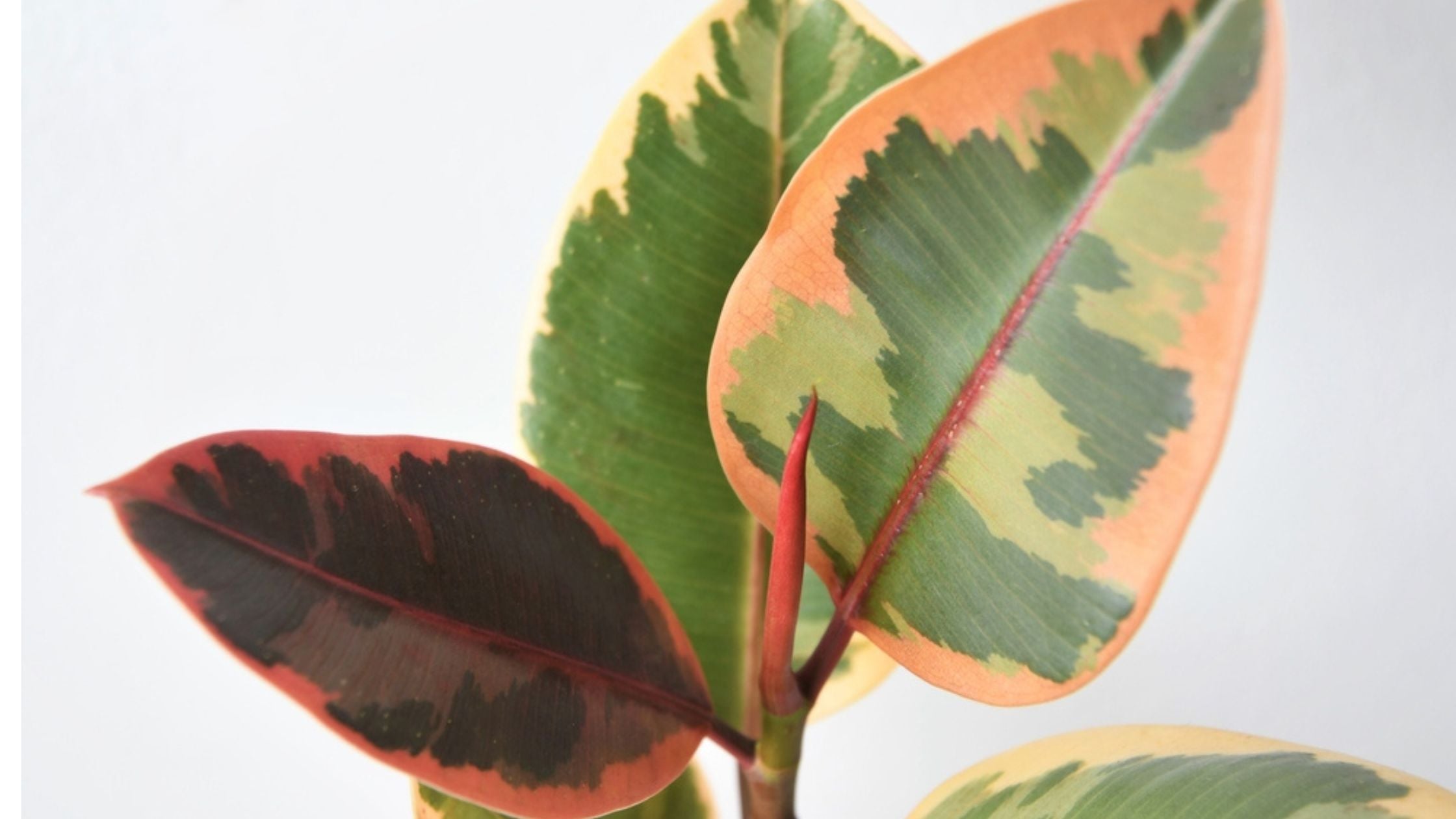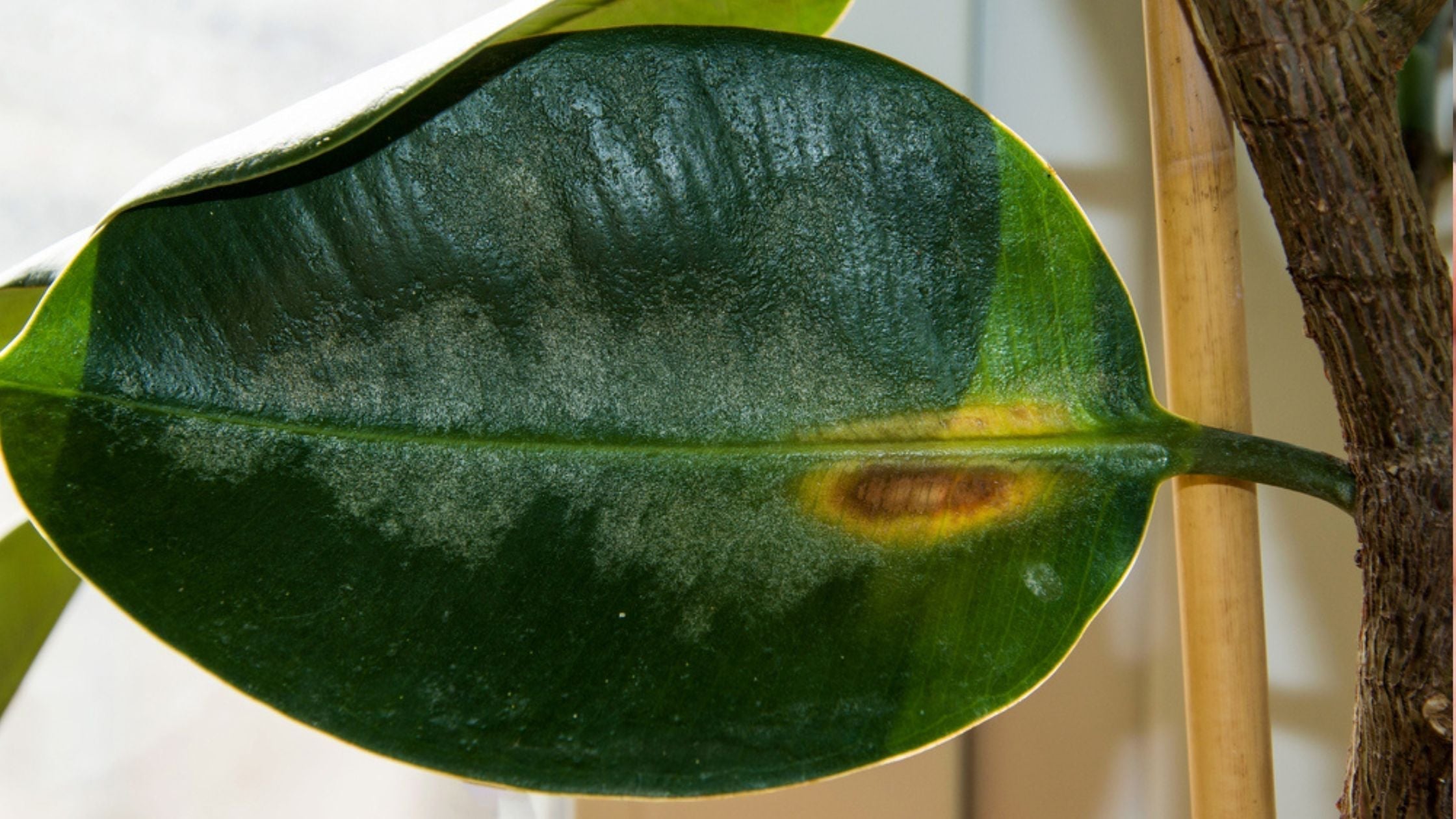
Glacier Pothos Care
The glacier pothos (Epipremnum Aureum Glacier) is a rare treat for the indoor plant collector. With its bright white and soft green variegation, this characterful little plant is much sought after and relatively hard to find. The glacier pothos plant is a variety of the pothos or Devil's Ivy (Epipremnum Aureum), a tropical vining plant famous among indoor gardeners for being almost impossible to kill. Like all pothos, the glacier pothos is very easy to grow.
The glacier pothos looks very similar to two other variegated pothos varieties: the Njoy and Snow Queen, which also have white and green leaves. What makes the glacier pothos different are its smaller, rounder leaves. Overall, the glacier pothos is one of the more compact variegated pothos varieties, making it perfect for desks and small spaces. Its white markings are also slightly different. The Pothos glacier features three colors. Looking closely at its leaves, you'll see an intermediate silver between the white and green areas. The white markings on the glacier are a different shape, too, being streaky rather than patchy, as on the NJoy or Snow Queen.
The glacier pothos plant will do spectacularly in the right climate when planted outdoors. In the wild and outside the confines of a pot, the stems can grow up to six feet. Only plant your pothos glacier outside if you live in USDA plant hardiness zones 10-11. Never plant your pothos glacier outside where there is a risk of freezing weather. If you live in a colder climate, you can always pop your potted pothos glacier outdoors during the summer when temperatures get warm. Your plant will love a bit of outdoor sunshine.
Best conditions for a glacier pothos
Your pothos glacier needs brighter lighting than the ordinary pothos because of its variegation. The plant cells in the white patches do not contain chlorophyll – the molecules that a plant needs to photosynthesize.
Position your pothos glacier in an area flooded with medium bright but indirect light. Positioning it in the direct path of the sunlight will scorch the leaves and eventually kill the plant. Ideally, pick a place where it can soak up lots of filtered light – for example, an east or west-facing window with some shadow from trees outside. Net curtains are an excellent way to moderate the light in a very bright position. Don't place it right next to a south-facing window. If you use a bright south-facing window for your pothos glacier, keep it about six feet away.
The pothos glacier will do well in a temperature range of 60-90°F. You won't have much problem here since most indoor spaces average a range of 68 to 76 °F
How much water?
Your pothos glacier plant won't need much watering. It's likely to bounce back even if you forget to water it occasionally.
Water your glacier pothos plant only when the top two inches of the soil is dry. When you water, run the pot under a tap until the water is dripping from the drainage holes at the bottom. Set the pot on a dry surface for any excess moisture to escape. Only place the pot back in the planter (if you use one) once the excess has run out. The pothos glacier will hate soggy soil.
Remember that the biggest killer of houseplants is over-watering, not underwatering. Cut back on watering in the fall and winter when your plant is not growing.
What is the best humidity?
The pothos glacier is a tropical plant, but it does not need excessive humidity to thrive like many other rainforest species. 50 to 70 percent air humidity is ideal, but the pothos glacier is forgiving: slightly lower humidity won't kill it.
That being said, the pothos glacier plant will grow quicker in humidity at the higher end of the scale. Here are three ways to boost local air humidity:
- Place a group of plants on a tray of pebbles with water halfway up the depth of the pebbles. Ensure the bottom of the pot doesn't touch the water, as this will make the soil too soggy. The idea behind the pebble tray is that the pebbles give a larger surface area for water to evaporate off of. Grouping plants also increases humidity in their immediate surroundings.
- Mist with a spray bottle several times a day. If you have a busy schedule and are likely to forget, opt for the pebble tray.
- Get a humidifier. This is one of the most effective ways to raise air humidity, especially if you have many indoor humid-loving plants.
What about fertilizer?
During the spring and summer, fertilize your pothos glacier with a balanced liquid fertilizer every two weeks. A balanced fertilizer contains phosphorus, potassium, and nitrogen in an equal proportion. Only add a little; your soil should give your plant some essential nutrients.
Best potting mix for a glacier pothos
A well-draining potting mix is best for the glacier pothos plant because it allows water to run freely and prevents waterlogging. African violet soil mixes work well for glacier pothos. Alternatively, use two parts of cactus soil mixed with one part of bark and perlite. The bark and perlite will keep things extra airy in the potting mix.
We recommend Southside Plants Trail Mix, a chunky potting mix perfect for tropical plants with ropey roots.
Repotting
You will know when to repot your pothos glacier when you see white roots forming around the sides of the soil or creeping through the drainage holes. Aim to upgrade your pot size before it reaches this point. Usually, once the plant has doubled in size, it's time to repot. Choose a new pot about two inches wider than the old one – if the pot is much bigger, the extra soil can lead to waterlogging and root rot.
Pruning
Control the size and shape of your plant by pruning. You won't have to do this often as the glacier pothos does not grow as fast as other pothos varieties. You might even want the stems to grow out if you've placed the pothos in a hanging basket or on a high shelf. When you do prune, only snip above leaf nodes to encourage branching and new growth.
Learn more



Leave a comment
This site is protected by hCaptcha and the hCaptcha Privacy Policy and Terms of Service apply.